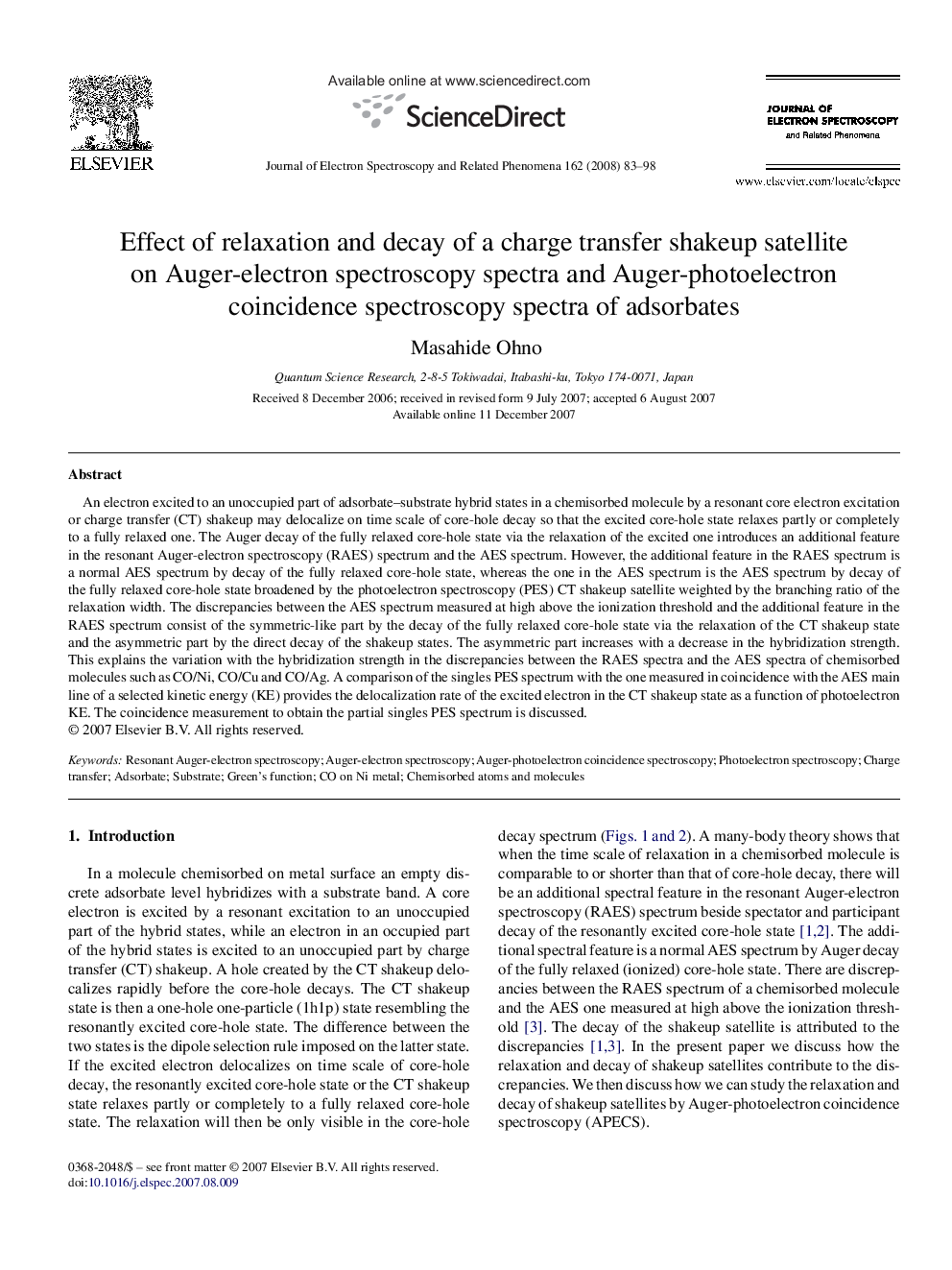| Article ID | Journal | Published Year | Pages | File Type |
|---|---|---|---|---|
| 5396967 | Journal of Electron Spectroscopy and Related Phenomena | 2008 | 16 Pages |
Abstract
An electron excited to an unoccupied part of adsorbate-substrate hybrid states in a chemisorbed molecule by a resonant core electron excitation or charge transfer (CT) shakeup may delocalize on time scale of core-hole decay so that the excited core-hole state relaxes partly or completely to a fully relaxed one. The Auger decay of the fully relaxed core-hole state via the relaxation of the excited one introduces an additional feature in the resonant Auger-electron spectroscopy (RAES) spectrum and the AES spectrum. However, the additional feature in the RAES spectrum is a normal AES spectrum by decay of the fully relaxed core-hole state, whereas the one in the AES spectrum is the AES spectrum by decay of the fully relaxed core-hole state broadened by the photoelectron spectroscopy (PES) CT shakeup satellite weighted by the branching ratio of the relaxation width. The discrepancies between the AES spectrum measured at high above the ionization threshold and the additional feature in the RAES spectrum consist of the symmetric-like part by the decay of the fully relaxed core-hole state via the relaxation of the CT shakeup state and the asymmetric part by the direct decay of the shakeup states. The asymmetric part increases with a decrease in the hybridization strength. This explains the variation with the hybridization strength in the discrepancies between the RAES spectra and the AES spectra of chemisorbed molecules such as CO/Ni, CO/Cu and CO/Ag. A comparison of the singles PES spectrum with the one measured in coincidence with the AES main line of a selected kinetic energy (KE) provides the delocalization rate of the excited electron in the CT shakeup state as a function of photoelectron KE. The coincidence measurement to obtain the partial singles PES spectrum is discussed.
Keywords
Related Topics
Physical Sciences and Engineering
Chemistry
Physical and Theoretical Chemistry
Authors
Masahide Ohno,
